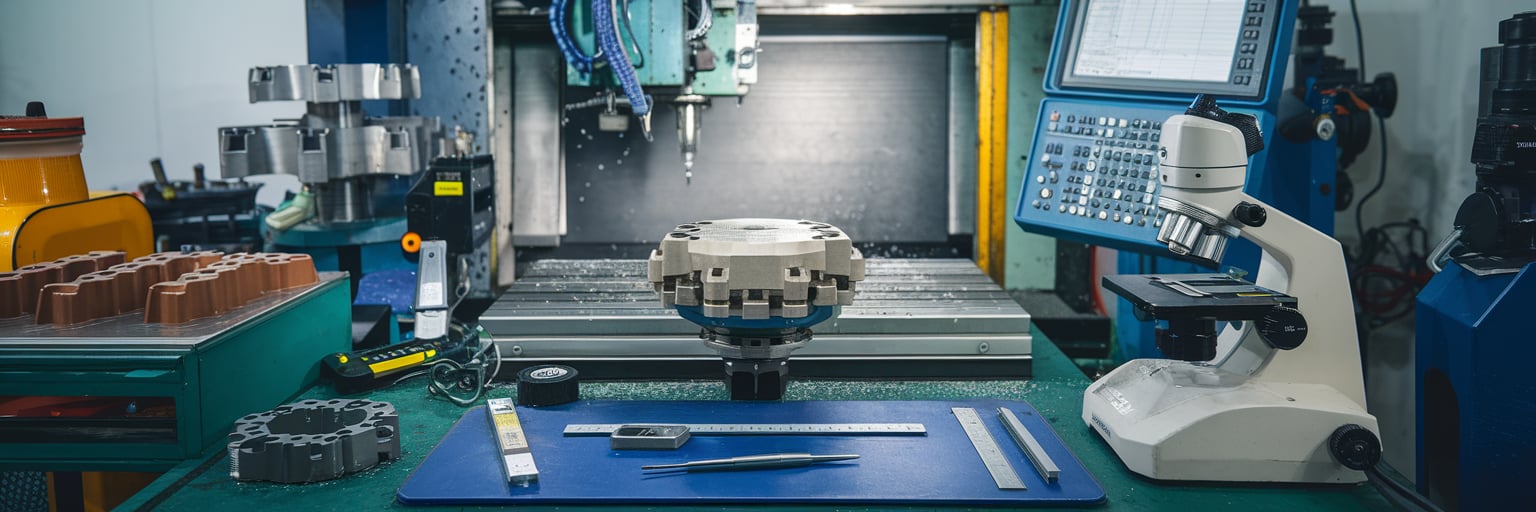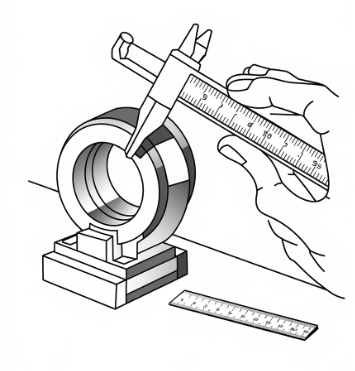In the manufacturing and engineering world, precision is everything. Whether it’s a CNC-machined component, a plastic mold, or an assembly line part, quality inspection plays a crucial role in ensuring parts meet the exact specifications and standards required for optimal performance. Parts inspection is much more than just checking measurements; it’s about validating that every component is built to perform reliably in its intended environment. In this blog, we’ll explore the importance of professional parts inspection and what makes a high-quality inspection process essential for today’s manufacturing needs.

Why Is Professional Parts Inspection So Important?
Manufacturing today demands components that are consistently accurate, functional, and durable. High-precision industries, such as aerospace, automotive, and medical device manufacturing, rely on stringent inspection protocols to ensure part reliability. Professional inspection:
- Reduces risk: Faulty parts in sectors like aerospace or automotive can lead to serious safety issues, so thorough inspection minimizes these risks.
- Improves product longevity: Parts made to exact specifications wear less and perform better, leading to longer-lasting products.
- Ensures compliance: Many industries are regulated by standards (ISO, ASME) that demand specific tolerances and materials. Professional inspection ensures compliance with these standards.
Types of Professional Parts Inspection

Different methods are used in parts inspection depending on the part’s design, material, and intended use. Here are some of the most common inspection methods:
Dimensional Inspection
Dimensional inspection checks if the part’s physical measurements match the required specifications. Using tools such as calipers, micrometers, and Coordinate Measuring Machines (CMM), inspectors verify each part’s height, width, depth, diameter, and thickness. This inspection is essential for parts with strict dimensional tolerances.
Dimensional Inspection
Dimensional inspection checks if the part’s physical measurements match the required specifications. Using tools such as calipers, micrometers, and Coordinate Measuring Machines (CMM), inspectors verify each part’s height, width, depth, diameter, and thickness. This inspection is essential for parts with strict dimensional tolerances.
Surface Inspection
Surface inspection focuses on the texture, finish, and any surface flaws like scratches, cracks, or pores. Visual inspection, often combined with automated imaging systems, allows inspectors to identify any irregularities that could impact performance or aesthetic quality.
Nondestructive Testing (NDT)
Nondestructive testing methods like ultrasonic testing, X-ray inspection, and magnetic particle inspection allow inspectors to examine the internal structure of a part without causing damage. This approach is valuable for critical components, such as those used in medical or aerospace applications.
Functional Testing
Functional testing evaluates whether a part performs correctly under specific conditions. By applying loads, pressures, or environmental conditions (like temperature changes), inspectors ensure the part can handle the intended usage requirements.
Key Components of a High-Quality Inspection Process
A professional parts inspection process involves meticulous planning, precise equipment, and experienced personnel. Here’s what you should look for in an inspection process:
- Advanced Equipment and Technology
- Trained Inspection Technicians
- Strict Quality Control and Reporting
- The Benefits of Professional Parts Inspection for Your Business
- Cost Savings: By catching flaws early, you reduce the cost of returns, reworks, and warranty claims, ultimately saving on production costs.
- Higher Customer Satisfaction: A commitment to quality results in parts that perform better and last longer, fostering trust with your customers.
- Enhanced Reputation: By delivering consistently reliable parts, your brand reputation for quality and dependability grows, potentially leading to more business.
Precision inspection relies heavily on specialized equipment. High-quality inspection services use cutting-edge tools, such as CMMs, optical comparators, and laser scanners. This technology improves measurement accuracy and speeds up the inspection process, delivering results with minimal human error.
Skilled technicians with expertise in metrology and part design are critical to accurate inspections. They understand industry standards and can interpret inspection data to identify areas for improvement or highlight critical flaws.
A professional inspection process includes thorough documentation of all findings. Comprehensive reports detail all measurements, deviations, and observations. These reports provide clients with transparency and traceability for every part inspected, giving them confidence in their components’ quality.
Professional parts inspection goes beyond just meeting industry standards—it enhances your business in multiple ways:
Choosing a Reliable Parts Inspection Service
If your business relies on precision-manufactured parts, finding a professional inspection service that aligns with your quality standards is essential. Look for a provider with a strong track record, advanced inspection capabilities, and a reputation for thorough reporting and accountability.
A high-quality parts inspection provider should offer:
- Versatile inspection options to accommodate different types of parts and materials.
- Fast turnaround times to keep production schedules on track.
- Data-driven reports that give you clear, actionable insights into each part’s quality.
Investing in professional parts inspection can transform your production quality, reduce costs, and enhance your product’s market reputation. Whether you manufacture complex CNC-machined components or small plastic parts, accurate inspection is essential to ensuring they meet performance expectations. At our inspection service, we’re dedicated to delivering precise, reliable inspections that meet industry standards and empower your business to deliver exceptional products. Contact us today to discuss your inspection needs, and let’s ensure your components meet the highest quality standards.